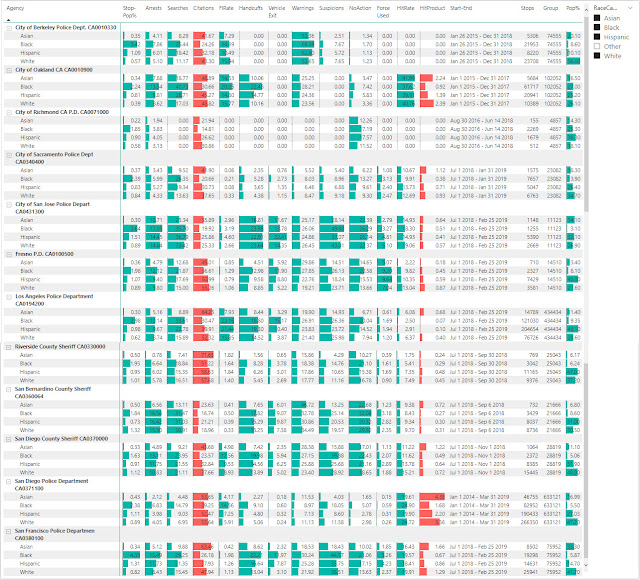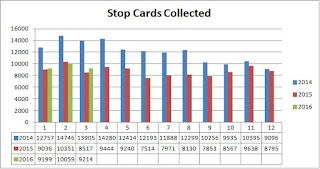Anything For Armstrong
January 28, 2021
San Diego, CA 92129
HyltonRichard@gmail.com or RHylton@San.RR.com
United States District Court
Northern District of California
450 Golden Gate Avenue
San Francisco, CA 94102
Re: Allen v. City of Oakland, Case No. C00-4599 WHO
By Surface
Mail
Dear Judge
Orrick.
I am a resident of California who
lives in San Diego. Members of my family have lived in San Francisco,
California since the 1930s. Most of my family lives in the Bay Area; scattered
from Daly City to Hercules.
I last wrote to this Court, on this case -the subject of a Stipulated Settlement Agreement- on June 24, 2018. In my letter, I raised concerns about substantial false reporting on policing actions, in Oakland CA. Nothing has changed to the positive. I daresay that things are trending worse. The underreporting that was the subject of my last communication has, at least, doubled, or so it seems.
Around six months after my last
communication, the Oakland Office of the Inspector General (OIG) performed an
audit of Oakland’s stop data, and/or reports. The OIG concluded that the
claimed reductions in firearm-related-post-stop actions were the result of
under-reporting. The passage is as follows:
On December 4, 2018, the Office of Inspector General
(OIG) initiated an audit to assess the Oakland Police Department’s (OPD)
reporting of force, usage of Portable Digital Recording Devices (PDRD),
and supervision of incidents during arrests for offenses where there is a
significant chance that force would be used. This audit followed an earlier OIG
review of the Department’s downward trend in the number of pointing of a
firearm incidents (published in OIG’s 3 rd Quarterly Progress Report), which
found instances of underreporting. The review of pointing of a firearm
incidents was initiated because of the steady decline in reported uses of force
between 2013 and 2017, and more specifically, the significant drop (44%) in
reported pointing of a firearm incidents between 2016 and 2017…
I regret that the OIG limited its
investigation to this specificity, because the correlation or coupling of Actions
Taken and Results of Stop variables, necessitated much broader
examination than was undertaken. In other words, interactions that began as
investigative stops (Field Interviews) often result in uses of force. They may
also result in any of the 24 Actions Taken, and more frequently than not
are. And Field Interview may be one of 13 resolutions or outcomes of the stop (Result
of Stop.) Accordingly, failure to report a Field Interview may be also a
failure to report its spawn. Doubtless, any in-depth investigation will show
that the Field Interview reporting failures shall have, once again, adversely
impacted Use-of-Force reported values.
Having said the above, the underreporting,
in essence, was the core claim of my prior communication and, once again, it is
the trigger for this item of complaint.
On a Friday evening in October 2020, I receive a notification of the existence of a YouTube video[1], the contents of which are Deputy Chief Armstrong’s report of Oakland’s 2019 stop results. At 3:46 Chief Armstrong asserted that the OPD’s actions “has led to a tremendous overall stop reduction in footprint.”
Armstrong’s assertion(s) about a tremendous reduction in footprint are false.
The claims upon which the OPD’s “tremendous reduction” boasts are based is that the number of reported stops is now reduced to 14,644. The claim is false, for it is 8446 less than that told to the CA-DOJ. The false count, 14,644, appears on Page 4 of a report signed by Chief Susan Manheim. Page 4 contains a figure that appears as follows:
Figure 1
The number of OPD stop records,
according to the CA-DOJ, for 2019 is 24,390; a number that is 8,846 higher than
Oakland’s. This (24,390- 14,644) is a
difference of 39.90%. Since no reasonable explanation has been floated, and
none is possible, it may be said that the claimed “tremendous reduction in footprint”
is once again the result of underreporting. Indeed, that 39.90% is remarkably
close to the 36% that Oakland boasts as a reduction in footprint.
The reduction in stops from 2017 to
2018 (32,407-19,971 =12,436) is also noteworthy. It, too, is in the
neighbourhood of 36 %, (38.37%) and is just as “tremendous”, and equally
implausible.
I have had written exchanges with
Oakland’s former inspector General, the person who, as mentioned above,
concluded that former claims of reduced footprints were the result of
underreporting. The former IG, who remains an authority on these things, after
diligent investigation, has concluded that the difference cannot otherwise be
reasonably accounted for.
I have a partial explanation. The Stop Result, Field Interview, is not included in the OPD report for 2019. Indeed, that particular Stop Result has not been included in OPD reports since 2016. Figure 2 illustrates zero (0) Field Interview records for 2017-2018, in a chart prepared from OPD data. Figure 2(the 2019 values shown here come from CA-DOJ data)
Please note that the 2019 values were
fetched from data obtained from the CA-DOJ[2].
Oakland’s source file, "Oakland
California 2019-Stop-Data-Annual-Report-Source-6Oct20-Final-1.xlsx", the
basis for its video and printed report, does not contain Field Interview
information. For that, and other, reasons I have not loaded its contents into
my database.
Oakland’s failure to comply with the California Public
Records Act
In my quest for validating the reported
data, as the California Attorney General encourages, and as has been my habit, I
have unsuccessfully sought Oakland’s stop data for 2018, beginning in August
2018 (18 months ago).
Oakland has granted itself 15 or more
14-day extensions of time to comply, and to date has failed to fulfill its
legal obligations. The California Public Records act requires fulfillment of
data requests within 24 days, at most.
Oakland has provided the requested
data to Stanford University.
Calls to the Office that handles complaints on CPRA issues
find it closed and messages go unanswered. The same is true for Emails.
The Court has it within its power to order compliance with
the California Public Records act. The Court should issue that order.
Oakland’s published You Tube Video,
and the Internet-available Oakland Final Signed report, are not only in
error, but they also appear to be deliberately false, for the OPD expressly states
that the criteria for both its report and that of the CA-DOJ are the same[3]. Oakland’s supporting source file
for the Oakland Final Signed report, "Oakland California
2019-Stop-Data-Annual-Report-Source-6Oct20-Final-1.xlsx", is equally
flawed. Both items mislead the public.
The foregoing are facts known to the
California Department of Justice and the RIPA Board. I (and perhaps others) was
importunate in my repetition of them. Despite the aforementioned knowledge, the
California Department of Justice and the RIPA Board, perhaps seeking to publish
good news, it seems, lauded Oakland’s “massive” accomplishment in its 4th
Annual RIPA Report. False reports are inimical to the public interests, since
they erode confidence in the police, not to mention belief in the good faith
and competence of the Attorney General. The forgoing facts were known to all
person who are mentioned in the distribution of this communication. None
dispute its contents.
Finally, while the OPD OIG is unable
to explain the above discrepancies, or to reasonably account for them, it is
within the power of the court to compel such explanation. I respectfully
request that the court order the Oakland PD to explain the 40% difference in
the reported stops, i.e., between what the OPD self-reports and what it reported
to the CA-DOJ. On the basis of diligent data analysis, I am confident that a
reasonable explanation shall not be forthcoming, absent Court intervention.
Accordingly, I ask that the Court prepare an order for the correction or removal,
from public display and access, all erroneous reports, unless the OPD can
demonstrate or show cause why that should not be done.
Submitted under penalty of perjury.
Sincerely,
Richard Hylton
john.burris@johnburrislaw.com
Nancy.Beninati@doj.ca.gov
CBolton@oaklandca.gov
smanheimer@oaklandca.gov
zwald@oaklandnet.com
pfigueroa@oaklandnet.com
kbliss@oaklandcityattorney.org
[1] https://youtu.be/rGuNrJCJUj0?t=226
[2]
The disparities use overall stops as the denominator. Little in the performance
of the CA-DOJ creates or encourages confidence in this dataset of 24,390
records either. Indeed, the 2019 FI disparities are a fraction of that for
prior years, where FI data was made available.
[3] Page 9 of the OPD’s report states…….. In order to align historical stop data collected with
fields now required by AB953, officers' selections are grouped into the following categories….





Comments
Post a Comment